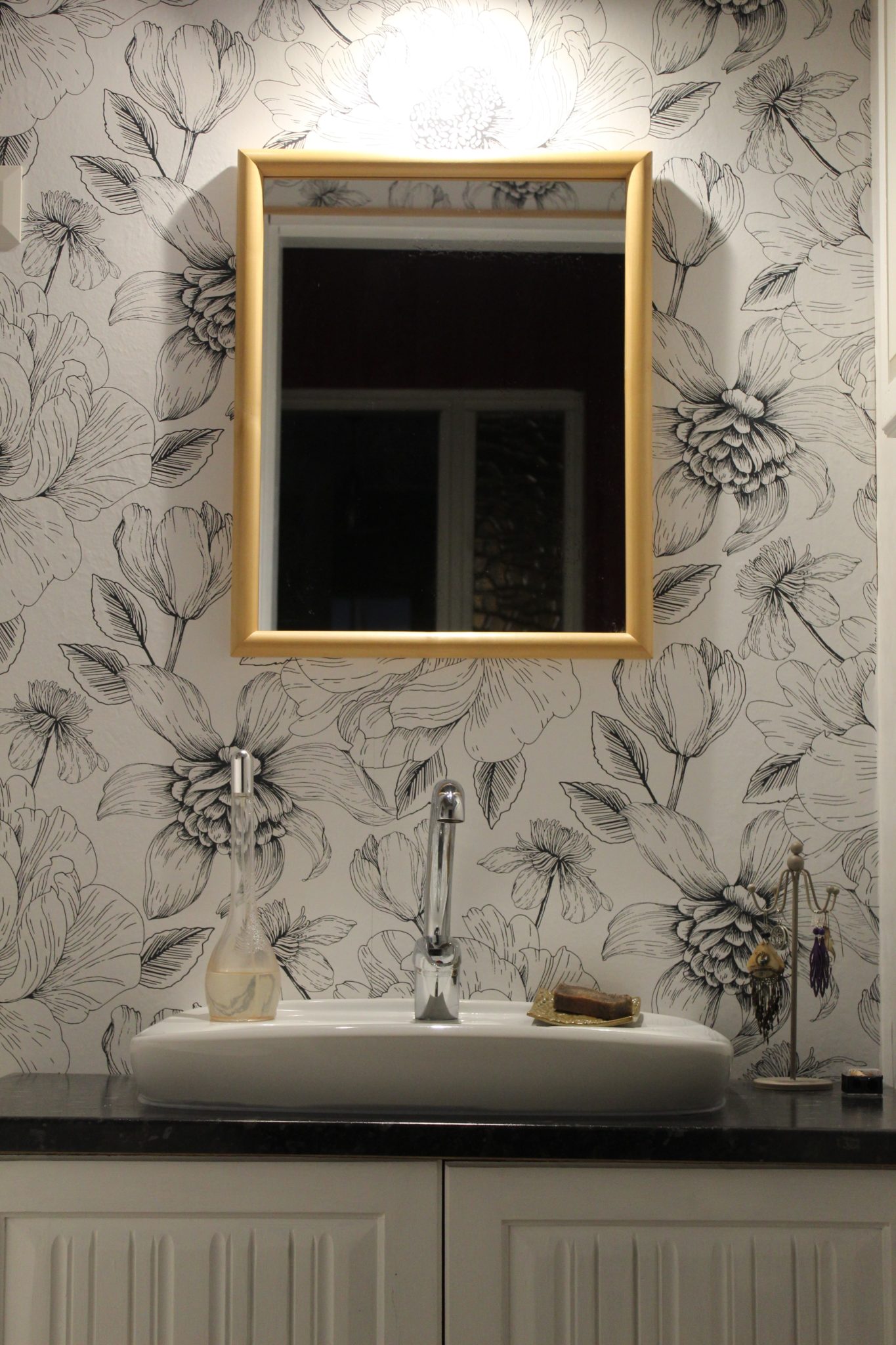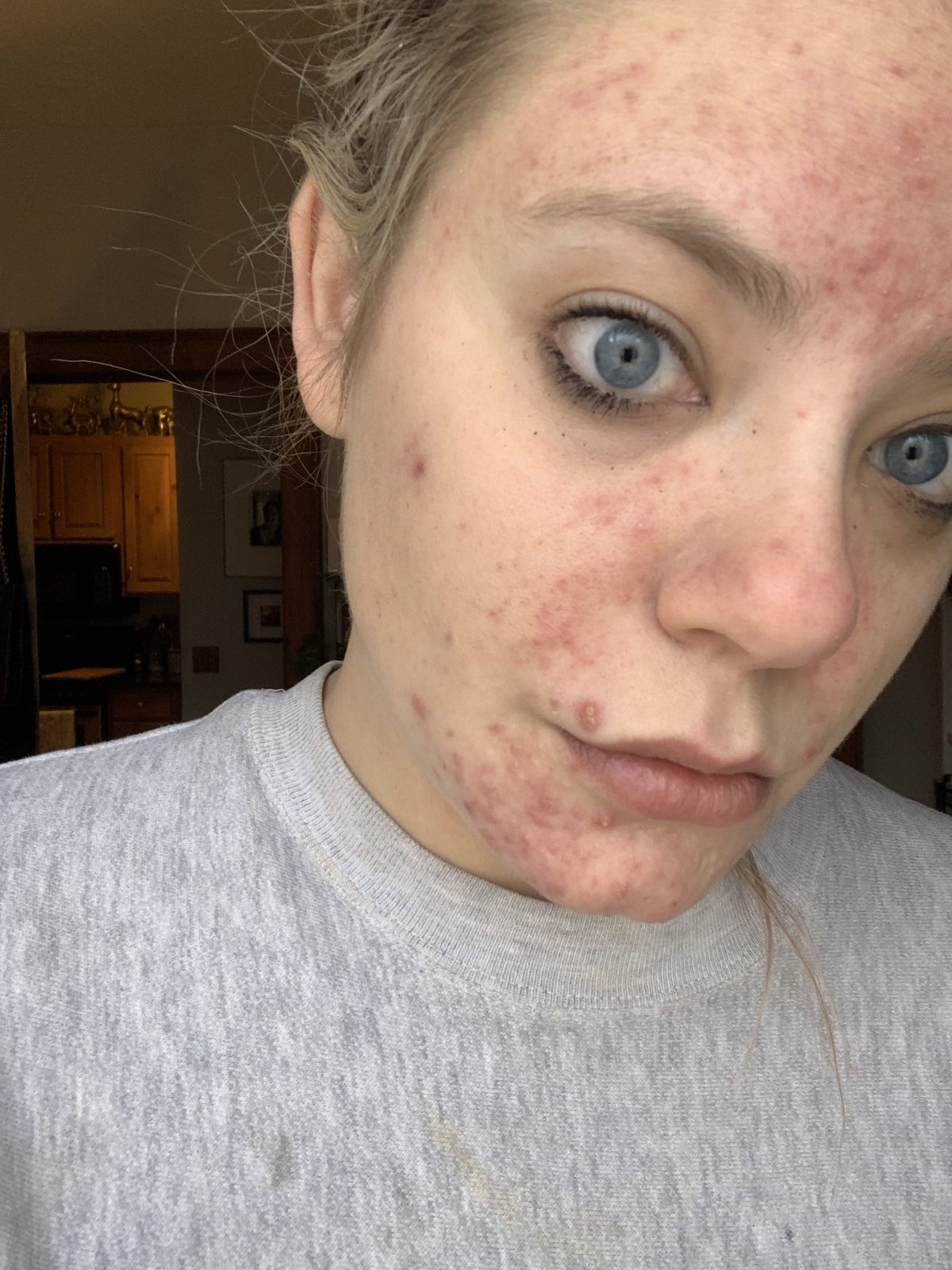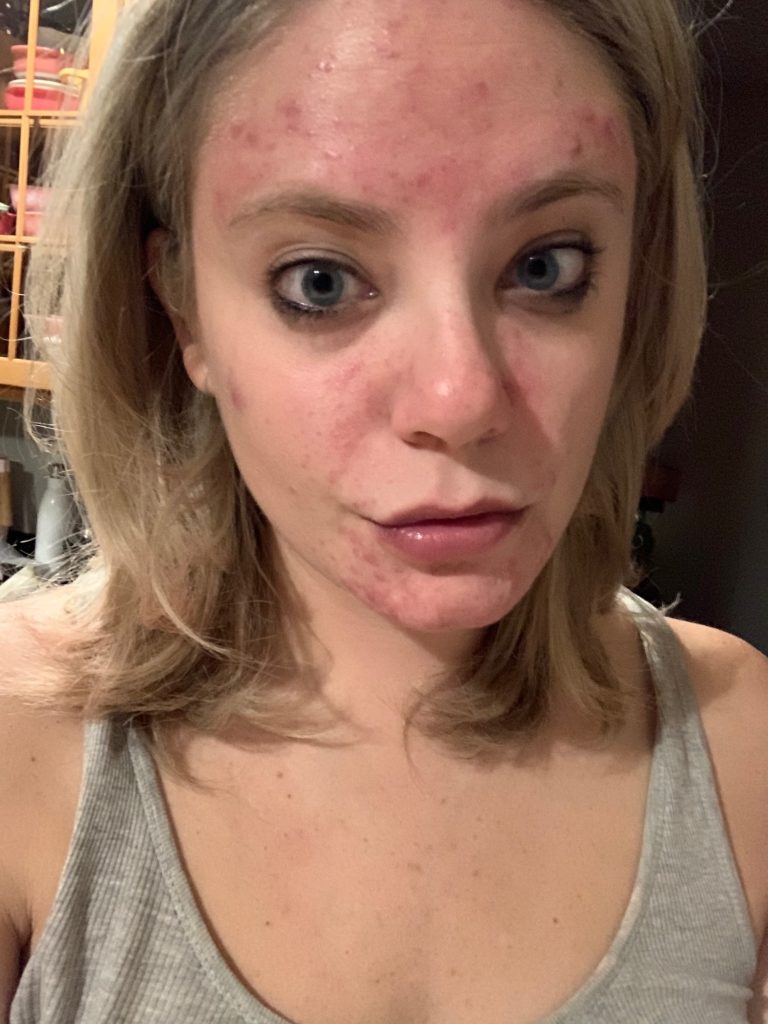

Photo by Anne Nygård on Unsplash
I spent a lot of my thirty-first year on earth crying about my skin. Yes, you’re reading that right: thirty-one, not thirteen, seventeen, or even twenty, when skin woes are presumed to be more common. I was in the midst of the worst hormonal acne breakout of my life and all I wanted was to hide away forever.
My skin was pretty normal during high school and college, but once I graduated, my skin completely freaked out—and it didn’t stop for years. I figured out that a combination of birth control pills and spironolactone, a pill traditionally used to help treat high blood pressure, was the dream team for my hormonal acne. (And yes, I tried skipping dairy, drinking more water, cutting sugar…I did it all.) I stuck with this pairing for years until I started thinking seriously about starting a family. Obviously, the pill had to go, and spironolactone went with it, as it decreases testosterone levels and can be harmful to a male fetus.
The acne was back with a vengeance practically overnight. Big, pulsating cysts on my chin popped up alongside smaller, but no less painful, bumps. I had zits in places I’d never had zits before, and they refused to go away. I thought to myself, “Your body is just leveling out, and after a few months, things will balance themselves. Just be patient.” I could be patient! Spironolactone, for example, takes about three months to show noticeable results.


My acne at its very worst.
It didn’t work. The battle went on for months. I was ashamed at the face staring back at me in the mirror. I was a thirty-one-year-old woman with a corporate career. Why did I have the acne of a teenager? None of my friends or coworkers had acne.
I stripped my routine down to just a few essential products and stayed away from anything too harsh. I started taking vitamins, just in case. My dermatologist told me that if I was trying to get pregnant, there really wasn’t much we could do from a prescription standpoint. I had to complete an at-home video interview for a job I was applying for and the monster zit on my chin was so large and noticeable that I eventually just brought it up and talked about it. I figured either the company would think I was a weirdo and discard my application or appreciate my honesty. (Thankfully, they went with the latter and I got the job.)
The entire experience was lonely and isolating. I felt stupid for crying over something so trivial as my skin, but I often burst into tears after washing my face each night. I posted about my skin woes on Instagram and got a flood of over thirty DMs from people who were going through the same thing.
The entire experience was lonely and isolating. I felt stupid for crying over something so trivial as my skin, but I often burst into tears after washing my face each night. I posted about my skin woes on Instagram and got a flood of over thirty DMs from people who were going through the same thing. I even tried to make hormonal acne “cool” and started wearing flashy earrings to distract from my face. I refused to let anyone else take a photo of me because I wouldn’t have control over the filters used.
But I hit a wall, and after another night of tears over my skin, I shared a lengthy Instagram post and tagged celebrity esthetician Renée Rouleau as a last resort. Renée noticed and got in touch with me immediately, and after we chatted by phone about my skin woes, she came up with a treatment plan.


Glamour shots? Sure.
“My first reaction [to your skin] was, ‘We need to put the fire out,’” Renee told me in an email interview. “Your skin was extremely red and inflamed and since acne is skin disease of inflammation, trying to calm was my first approach. In my thirty years of being an esthetician, I have seen inflamed skin and further irritating with harsh and drying acne products (which is often the go-to approach for acne) isn’t the best way to go.”
Renee also provided some insight into what hormonal acne actually is; it’s not as easily treatable as “regular” acne. “All types of breakouts for both males and females have some sort of relation to hormonal shifts that occur in the body. Most often, cystic acne (the deeper, sore blemishes that occur often in the chin and jawline that don’t come to the surface) are especially tied to hormones such as ones women will get before/during their monthly cycle,” she said. “As for acne that develops in adults, men will experience less of this because their hormones slow down with age, where a woman’s will speed up, making her more likely to get breakouts well into her twenties, thirties, and beyond. Since cysts are a very unique type of blemish, traditional drying treatments don’t work on these since the infection is not on the skin’s surface.” She prescribed a gentle, yet hardworking routine that would help soothe my skin while killing the zits.
“It’s important to understand that acne is an inflammatory disease of skin Therefore, further inflaming the skin is an absolute no-no. Certain ingredients are known irritants and can be more harmful than helpful in skin types that get easily irritated, ” Renée told me. “Always avoid products that leave your skin feeling tight and dry as that is very damaging to the skin’s protective barrier. This will cause your blemish to hang around longer underneath the skin’s surface, which is never good in your effort to get it to go away fast with the least amount of scarring.”
This complicated journey has taught me some really important lessons about confidence and self-worth, namely that your skin does not define you, and the things you obsess about in the mirror barely register to other people. Even when you feel less than beautiful, you’re still you, and you’re also not alone.
After just a few weeks on Renée’s regimen, my skin began to visibly improve. I didn’t feel the need to slap on quite so many layers of concealer and powder, though I still wouldn’t leave the house without something on my skin. (In case you’re wondering, I recommend all of Renée’s products, but her miraculous Anti-Bump Solution, Rapid Response Detox Masque, and Skin Correcting Serum are some of the standouts.) I started feeling more like myself and was more willing to experiment with makeup—and selfies!—again.
My skin is still far from perfect today, but it’s significantly better. This complicated journey has taught me some really important lessons about confidence and self-worth, namely that your skin does not define you, and the things you obsess about in the mirror barely register to other people. Even when you feel less than beautiful, you’re still you, and you’re also not alone. I learned that it’s better to share your feelings than to hide behind an Instagram filter, and that being honest and vulnerable is always worth it. I’m still not 100% comfortable with the face staring back at me in the mirror, and I probably never will be, but I know that my acne doesn’t define me. Even when a giant new bump bubbles up overnight and hangs out on my chin for weeks, it’s not the whole of my existence. And when everything else fails, there’s always concealer.
Kara Nesvig grew up on a sugar beet farm in rural North Dakota and pretended to be Dorothy from The Wizard of Oz for about three full years. Things haven’t changed much, except she now lives in an adorable ’20s house in St. Paul with her husband, their Cavalier King Charles Spaniel Dandelion and many, many pairs of shoes. Kara is a voracious reader, Britney Spears superfan and copywriter — in that order.








